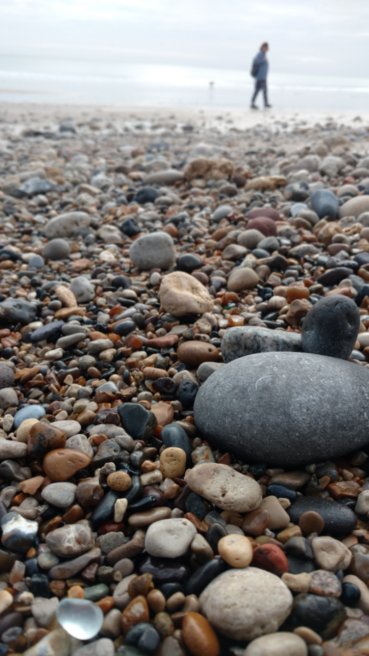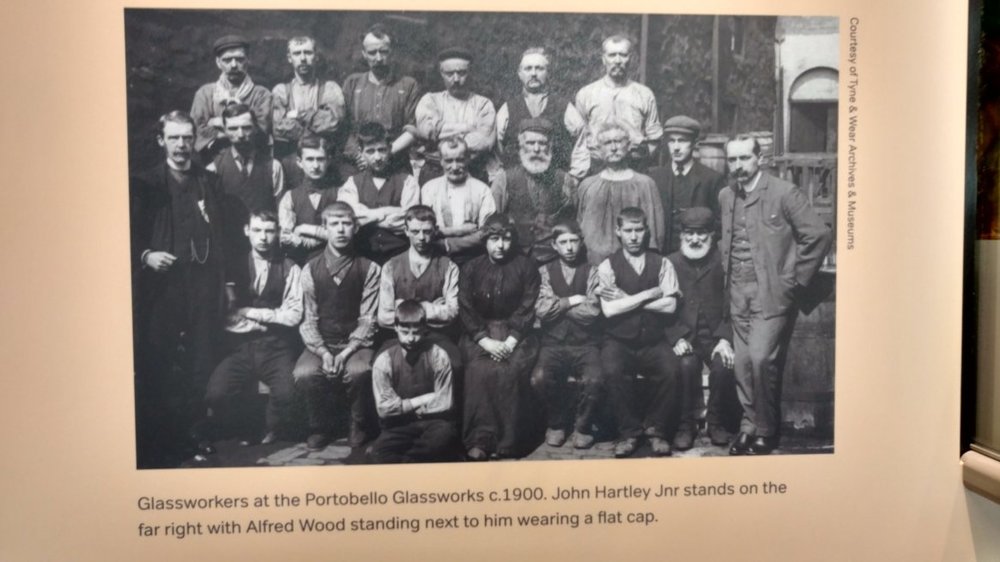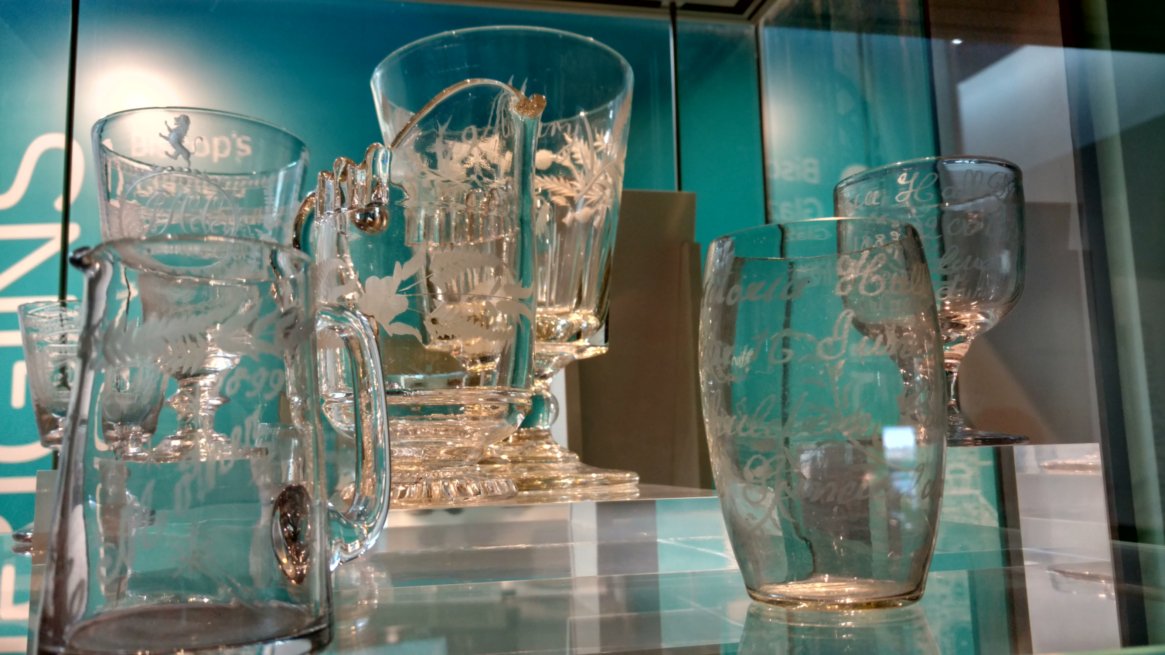 A Seaham stroll
A Seaham stroll
On the last day of 2017, I am finally sorting through the hundreds of photos shot on a sea glass trip to the UK this summer, with the goal of sharing some highlights with you before another year goes by. My friend Jane, who I visited in Sunderland in 2014 (read more in archived blog posts) generously penciled in three weeks for my return visit, which included sightseeing in London, sea glass hunting on England’s Northeast coast and a glamping road trip through Scotland, stopping at every beach or charity shop that crossed our path (not to mention pubs). I traveled by plane, train, car, bus, ferry, and foot-walking an average of 17,800 steps a day, or about fifty-two miles in one week, (thank you fit bit.) Dining experiences ran the gamut from swanky gentleman’s tea in Wynyard Hall to microwavable haggis at a Scottish hostel on a very rainy night, too exhausted to go out, lovely Indian takeaways and delicious home-cooked comfort food prepared by Jane’s husband, Trevor.
Drinking experiences were decidedly egalitarian- in London, Jane and I drank canned Gin and Tonic purchased at a nearby Waitrose store under the Tower Bridge, and also enjoyed the decidedly nicer and more expensive G and T’s in the Kings Cross railway station bar, (almost missing our train to Sunderland.)
 Cheers!
Cheers!
When we weren’t on the beach hunting for sea glass, we were using the scenery as a backdrop to photo shoot jewelry I brought along for this purpose. It was especially fitting because the sea glass used in making the collection was found on the English coast, some of it by Jane and Trevor. Jane was a very good sport about it, especially when her crazy American friend used the very food we ate as photo props!
There are so many great memories in all of it, that I must simply stop for a moment and thank Jane and Trevor again for their wonderful hospitality and friendship.
 Gentleman’s tea at Wynyard Hall, with scotch egg, piccalilli, sandwiches, scones, and more-a great setting for a sea glass ring. Not pictured: the glass of whiskey that was included with meal.
Gentleman’s tea at Wynyard Hall, with scotch egg, piccalilli, sandwiches, scones, and more-a great setting for a sea glass ring. Not pictured: the glass of whiskey that was included with meal.  Faceted sea glass marble and Big Ben
Faceted sea glass marble and Big Ben
From London we go to the source of some of the world’s best sea glass, the beaches of Northeast England.
 In keeping with protocol I will not be naming beaches, but this is in the general area of Sunderland.
In keeping with protocol I will not be naming beaches, but this is in the general area of Sunderland.

Jane and I had the entire beach to ourselves on a very warm August day. As the afternoon wore on a few other glassers rounded the cove and came into view. I was already friends with one of them through a facebook sea glassing group and it was a pleasure to meet in person. Jane and I flying the flag of Tokeland that day, and our mutual friend took this photo of us.
 Sea Glass Sister. Jane and I examine the sea glass she she picked up that was lying at our feet!
Sea Glass Sister. Jane and I examine the sea glass she she picked up that was lying at our feet!  A very rare purple sea glass nestled in kelp near the beach where Jane originally found it.
A very rare purple sea glass nestled in kelp near the beach where Jane originally found it.

A view from the top-the beach is accessible by a steep path winding down through the tall grasses.
The reason there is so much sea glass found in along the Northeast coast is because it was perfectly situated to produce glass, having the natural resources of sand and lime and easy transport by rail or ship. Factories disposed of waste glass by dumping into the rivers or sea, which was transformed by the action of tide and time into sea glass.We visited museums and the Glass Centre to learn more about the history of glass making.


 There are many fine example of the glass produced in the Sunderland area in the museum and the Glass Centre, both are definitly worth visiting.
There are many fine example of the glass produced in the Sunderland area in the museum and the Glass Centre, both are definitly worth visiting.

Coalmining was a major enterprise here, with mines tunneling out under the sea. I am standing in a now defunct elevator, that would transport miner down to the tunnel where they would work off shore. The film Billy Elliot was shot in the nearby village of Easington, and the death scene in Get Carter, the original film with Michael Caine, shot further north of here. I walked along a path with markers outlining the history of the mines, accidents and strikes that ended in the early 1990s when the last mine closed. The environmental damage wrought on the beaches is being reversed, slowly but surely.

Jane and I planned a road trip to visit sea glass beaches in Scotland which included glamping in a “posh pod” along the way as we drove from east to west along the Firth of Forth. In Oban we would take a ferry to the isle of Mull, where further adventure awaited…
 Arriving at Lower Largo as the sun sets.
Arriving at Lower Largo as the sun sets.  St Monans
St Monans

My new “happy place.”
 St Monan’s church
St Monan’s church

 Empire Biscuits After several hours walking along the beaches we were ready for a coffee and treat. I love the Scottish bakeries!
Empire Biscuits After several hours walking along the beaches we were ready for a coffee and treat. I love the Scottish bakeries!  This was one of the best pieces of glass I found in Scotland.
This was one of the best pieces of glass I found in Scotland.
Inside our posh pod, glam-camping with all the comforts of home and a pub within walking distance nearby!

End of Part One-Stayed tuned for Part Two, Isle of Mull and Beyond